Strategic Web-Based Data Dashboards as Monitoring Tools for Promoting Organizational Innovation
Abstract
1. Introduction
RQ: How can the upper management within organizations ensure proactive participation of the end-users and continuous high-quality input within the knowledge repositories which ultimately leads to enhanced organizational innovation?
1.1. Background
1.2. Data Dashboards
2. Literature Review
2.1. Current Status of Organizational Knowledge Management
2.2. Types of Dashboards Based on Organizational Needs
2.3. Dashboard Applications and Knowledge Gaps in the Realm of Knowledge Repositories
2.4. Previous Work Regarding Dashboards at Other Organizations and Departments of Transportation
3. Materials and Methods
- Information about lessons learned and best practices entered in CLEAR (extracted from Sharepoint in. xlsx format);
- Innovation Culture Index information for the NCDOT personnel (Innovation Culture Index survey data);
- Website analytics to monitor the usage of CLEAR webpages by the end-users (provided by the NC DIT).
4. Results
4.1. Data Dashboards for the CLEAR Program
4.1.1. Lessons Learned/Best Practices Dashboard
4.1.2. Innovation Culture Index Data Dashboard
4.1.3. Website Analytics Dashboard
4.2. Training Materials
5. Discussion
5.1. Current Trends in the CLEAR Program
5.2. Limitations and Future Scope
6. Conclusions
Author Contributions
Funding
Institutional Review Board Statement
Data Availability Statement
Acknowledgments
Conflicts of Interest
Appendix A
- How did we identify this issue?
- What are some next steps to investigate an issue?
- Approximately 90% of projects with utilities claims had one or two utilities-related claims.
- Each division had at least 30 utility-related claims during the study period.
- Smaller projects (up to $5 million) were most affected by utilities claims; roughly three out of four projects were affected by utilities claims.
- Claims that pertain to utilities conflicts accounted for about 57% of all utilities-related schedule delays.
- For the projects affected by utilities claims, project costs increased by about 2.4%, with schedule delays increased by 70 days on average.
- Communicating early and frequently with utilities providers in order to have a shared sense of responsibility (with the NCDOT) in relocating utilities.
- Holding constructability reviews with utilities owners to minimize plan changes.
- Exploring the possibility of imposing liquidated damages on utilities companies to ensure that they do not default on agreed-upon dates for utilities relocation.
- Performing comprehensive subsurface investigations on all projects to avoid encountering buried utilities.
- What can be done to implement this experience into a lesson learned or to make positive changes in the NCDOT?
References
- Johns Hopkins. Coronavirus Resource Center. Available online: https://coronavirus.jhu.edu/ (accessed on 17 May 2025).
- UK Health Security Agency. How UKHSA’s COVID-19 Dashboard Worked During the Pandemic. 16 December 2021. Available online: https://ukhsa.blog.gov.uk/2021/12/16/what-does-covid-19-look-like-in-your-area/ (accessed on 17 May 2025).
- Field, E.; Dyda, A.; Hewett, M.; Weng, H.; Shi, J.; Curtis, S.; Law, C.; McHugh, L.; Sheel, M.; Moore, J.; et al. Development of the COVID-19 Real-Time Information System for Preparedness and Epidemic Response (CRISPER), Australia. Front. Public Health 2021, 9, 753493. [Google Scholar] [CrossRef] [PubMed]
- Laufer, A.; Denker, G.R.; Shenhar, A.J. Simultaneous management: The key to excellence in capital projects. Int. J. Proj. Manag. 1996, 14, 189–199. [Google Scholar] [CrossRef]
- Cristóbal, J.R.S.; Carral, L.; Diaz, E.; Fraguela, J.A.; Iglesias, G. Complexity and Project Management: A General Overview. Complexity 2018, 2018, 1–10. [Google Scholar] [CrossRef]
- Russell, J.S.; Jaselskis, E.J.; Lawrence, S.P. Continuous Assessment of Project Performance. J. Constr. Eng. Manag. 1997, 123, 64–71. [Google Scholar] [CrossRef]
- Parker, S.K.; Skitmore, R.M. Project Management Turnover: Causes and Effects on Project Performance. Int. J. Proj. Manag. 2005, 23, 205–214. [Google Scholar] [CrossRef]
- Wong, W.L.P.; Radcliffe, D.F. The Tacit Nature of Design Knowledge. Technol. Anal. Strateg. Manag. 2000, 12, 493–512. [Google Scholar] [CrossRef]
- Nonaka, I.; Takeuchi, H. The Knowledge-Creating Company: How Japanese Companies Create the Dynamics of Innovation; University of Illinois at Urbana-Champaign’s Academy for Entrepreneurial Leadership Historical Research Reference in Entrepreneurship; University of Illinois at Urbana-Champaign: Urbana-Champaign, IL, USA, 1995. [Google Scholar]
- Obeidat, B.Y.; Al-Suradi, M.M.; Masa’deh, R.E.; Tarhini, A. The Impact of Knowledge Management on Innovation: An Empirical Study on Jordanian Consultancy Firms. Manag. Res. Rev. 2016, 39, 1214–1238. [Google Scholar] [CrossRef]
- Smith, M.K. Michael Polanyi and Tacit Knowledge. 2003. Available online: https://infed.org/mobi/michael-polanyi-and-tacit-knowledge/ (accessed on 10 April 2021).
- Rezaei, F.; Khalilzadeh, M.; Soleimani, P. Factors Affecting Knowledge Management and Its Effect on Organizational Performance: Mediating the Role of Human Capital. Adv. Hum.-Comput. Interact. 2021, 2021, 8857572. [Google Scholar] [CrossRef]
- Singh, P.K. Knowledge Strategy, Sharing Behavior and Performance. Manag. Res. Rev. 2018, 41, 395–411. [Google Scholar] [CrossRef]
- Banerjee, S.; Alsharef, A.; Jaselskis, E.J.; Piratla, K.R. Review of Current Practices for Implementing Organization-Wide Knowledge Repositories. In Proceedings of the Construction Research Congress 2022, Arlington, VA, USA, 9–12 March 2022. [Google Scholar]
- Rowe, S.F. Applying lessons learned. In Proceedings of the PMI® Global Congress 2008—EMEA, St. Julian’s, Malta, 19 May 2008. [Google Scholar]
- Dülgerler, M.; Negri, M. Lessons (Really) Learned? How to Retain Project Knowledge and Avoid Recurring Nightmares: Knowledge Management and Lessons Learned. In Proceedings of the PMI® Global Congress 2016—EMEA, Barcelona, Spain, 9–11 May 2016. [Google Scholar]
- Wills, B. 5 Companies Examples with A+ Knowledge Management Skills. ProProfs. 20 December 2021. Available online: https://www.proprofskb.com/blog/top-companies-knowledge-management-skills/ (accessed on 1 July 2022).
- Vaghefi, I.; Lapointe, L.; Shahbaznezhad, H. A multilevel process view of organizational knowledge transfer: Enablers versus barriers. J. Manag. Anal. 2018, 5, 1–17. [Google Scholar] [CrossRef]
- Zahra, S.A.; George, G. Absorptive Capacity: A Review, Reconceptualization, and Extension. Acad. Manag. Rev. 2002, 27, 185–203. [Google Scholar] [CrossRef]
- Petter, S.; DeLone, W.; McLean, E.R. Information Systems Success: The Quest for the Independent Variables. J. Manag. Inf. Syst. 2013, 29, 7–62. [Google Scholar] [CrossRef]
- Ganopol, A.; Oglietti, M.; Ambrosino, A.; Patt, F.; Scott, A.; Hong, L.; Feldman, G. Lessons Learned: An Effective Approach to Avoid Repeating the Same Old Mistakes. J. Aerosp. Inf. Syst. 2017, 14, 483–492. [Google Scholar] [CrossRef]
- Banerjee, S.; Jaselskis, E.J.; Alsharef, A.F. Design For Six Sigma (DFSS) Approach for Creating CLEAR Lessons Learned Database. Period. Polytech. Archit. 2020, 51, 75–82. [Google Scholar] [CrossRef]
- Fullerton, C.E.; Tamer, A.W.; Banerjee, S.; Alsharef, A.; Jaselskis, E.J. Development of North Carolina Department of Transportation’s CLEAR Program for Enhanced Project Performance. Transp. Res. Rec. 2021, 2675, 222–234. [Google Scholar] [CrossRef]
- Mattern, S. Mission Control: A History of the Urban Dashboard. March 2015. Available online: https://placesjournal.org/article/mission-control-a-history-of-the-urban-dashboard/?cn-reloaded=1 (accessed on 19 June 2021).
- Nettleton, D. Incorporating Various Sources of Data and Information. In Commercial Data Mining; Nettleton, D., Ed.; Morgan Kaufmann: San Francisco, CA, USA, 2014; pp. 17–47. [Google Scholar]
- Tableau. Your Methodology to Becoming a Data-Driven Organization. 2021. Available online: https://www.tableau.com/learn/blueprint (accessed on 20 June 2021).
- Drucker, P.F. Knowledge-worker productivity: The biggest challenge. Calif. Manag. Rev. 1999, 41, 79–94. [Google Scholar] [CrossRef]
- Anumba, C.; Egbu, C.; Carrillo, P. Knowledge Management in Construction; Blackwell: Oxford, UK, 2005. [Google Scholar]
- Project Management Institute. A Guide to the Project Management Body of Knowledge (PMBOK Guide); Project Management Institute: Newton Square, PA, USA, 2017. [Google Scholar]
- El Khatib, M.; Al Jaberi, A.; Al Mahri, A. Benchmarking Projects’ “Lessons Learned” through Knowledge Management Systems: Case of an Oil Company. iBusiness 2021, 13, 1–17. [Google Scholar] [CrossRef]
- Bani-Hani, I.; Chowdhury, S.; Kurti, A. The Triadic Relationship of Sense-Making, Analytics, and Institutional Influences. Informatics 2022, 9, 3. [Google Scholar] [CrossRef]
- Durcevic, S. Make Sure You Know the Difference Between Strategic, Analytical, Operational and Tactical Dashboards. 22 July 2020. Available online: https://www.datapine.com/blog/strategic-operational-analytical-tactical-dashboards/ (accessed on 27 July 2021).
- López, L.; Manzano, M.; Gómez, C.; Oriol, M.; Farré, C.; Franch, X.; Martínez-Fernández, S.; Vollmer, A.M. QaSD: A Quality-aware Strategic Dashboard for supporting decision makers in Agile Software Development. Sci. Comput. Program. 2021, 202, 102568. [Google Scholar] [CrossRef]
- Alsharef, A.; Banerjee, S.; Uddin, S.M.J.; Albert, A.; Jaselskis, E. Early impacts of the COVID-19 pandemic on the united states construction industry. Int. J. Environ. Res. Public Health 2021, 18, 1559. [Google Scholar] [CrossRef]
- Kivits, R.A.; Furneaux, C. BIM: Enabling Sustainability and Asset Management through Knowledge Management. Sci. World J. 2013, 2013, 983721. [Google Scholar] [CrossRef] [PubMed]
- Taylor, J.E.; Levitt, R. Innovation Alignment and Project Network Dynamics: An Integrative Model for Change. Proj. Manag. J. 2007, 38, 22–35. [Google Scholar] [CrossRef]
- Lin, Y.-C.; Wang, L.-C.; Tserng, H.P. Enhancing knowledge exchange through web map-based knowledge management system in construction: Lessons learned in Taiwan. Autom. Constr. 2006, 15, 693–705. [Google Scholar] [CrossRef]
- Tserng, H.P.; Yin, S.Y.-L.; Lee, M.-H. The Use of Knowledge Map Model in Construction Industry. J. Civ. Eng. Manag. 2010, 16, 332–344. [Google Scholar] [CrossRef]
- Pauwels, P.; Terkaj, W. EXPRESS to OWL for construction industry: Towards a recommendable and usable ifcOWL ontology. Autom. Constr. 2016, 63, 100–133. [Google Scholar] [CrossRef]
- Xu, S.; Liu, K.; Tang, L.C.M.; Li, W. A framework for integrating syntax, semantics and pragmatics for computer-aided professional practice: With application of costing in construction industry. Comput. Ind. 2016, 83, 28–45. [Google Scholar] [CrossRef]
- Usman, Z.S.; Tah, J.H.M.; Abanda, F.H.; Nche, C. Integration of an ontology with IFC for efficient knowledge discovery in the construction domain. In eWork and eBusiness in Architecture, Engineering and Construction: Proceedings of the 12th European Conference on Product and Process Modelling (ECPPM 2018), Copenhagen, Denmark, 12–14 September 2018; CRC Press: Oxford, UK, 2018. [Google Scholar]
- Pauwels, K.; Ambler, T.; Clark, B.H.; LaPointe, P.; Reibstein, D.; Skiera, B.; Wieranga, B.; Wiesel, T. Dashboards as a service: Why, what, how, and what research is needed? J. Serv. Res. 2009, 12, 175–189. [Google Scholar] [CrossRef]
- Ganapati, S. Use of Dashboards in Government; IBM Center for The Business of Government: Washington, DC, USA, 2011. [Google Scholar]
- BTS. National Transportation Atlas Database. 29 April 2021. Available online: https://www.bts.gov/ntad (accessed on 28 June 2021).
- BTS. Pocket Guide to Transportation 2021. 1 January 2021. Available online: https://rosap.ntl.bts.gov/view/dot/54286 (accessed on 18 July 2021).
- Apple. App Store—Apple. Available online: https://www.apple.com/app-store/ (accessed on 23 March 2022).
- Google. Google Play. Available online: https://play.google.com/store?hl=en_US&gl=US (accessed on 23 March 2022).
- ARDOT. ACAT (Arkansas Crash Analytics Tool). 2021. Available online: https://gis.ardot.gov/portal/apps/dashboards/3ae35f942fa340888abd27f26d405558 (accessed on 23 May 2025).
- MDOT. Billboard Viewer. 2021. Available online: https://www.arcgis.com/home/item.html?id=f91a3d3bc8084ab1bed471a0f2078570 (accessed on 23 May 2025).
- Hranac, R.; Petty, K. Dashboards for Transportation Operations: Detector Health Case Study. Transp. Res. Rec. 2007, 1993, 36–42. [Google Scholar] [CrossRef]
- UDOT. Innovation Program Dashboard. 29 July 2021. Available online: https://app.powerbigov.us/view?r=eyJrIjoiNzVkMTRlMzctMTk0My00MDUzLWI5ZDItZDVlNzE5MzIyNGVlIiwidCI6ImFkZjY2ZWIyLWZjY2YtNDE3My1iZjQ0LTNmNzY3MzBhYTg5ZSJ9 (accessed on 29 July 2021).
- DOMO. Using Maps as a Data Visualization Tool. DOMO. Available online: https://www.domo.com/charts/map-charts (accessed on 3 July 2022).
- Henard, D.H. CLEAR Technology Transfer and Metric Building; North Carolina Department of Transportation: Raleigh, NC, USA, 2020. [Google Scholar]
- Tableau. Survey Analysis. Tableau. Available online: https://www.tableau.com/solutions/survey-analysis (accessed on 25 February 2021).
- Laubheimer, P. Treemaps: Data Visualization of Complex Hierarchies. Nielsen Norman Group. 29 September 2019. Available online: https://www.nngroup.com/articles/treemaps/ (accessed on 4 July 2022).
- Sheffield, L. Construction Grows, But Baby Boomers Retiring Leaves Gap. ADP. 2019. Available online: https://www.adp.com/spark/articles/2019/02/construction-grows-but-baby-boomers-retiring-leaves-gap.aspx (accessed on 12 May 2022).
- Ho, S.-P.; Tserng, H.-P.; Jan, S.-H. Enhancing Knowledge Sharing Management Using BIM Technology in Construction. Sci. World J. 2013, 2013, 170498. [Google Scholar] [CrossRef]
- Mehrbod, S.; Staub-French, S.; Mahyar, N.; Tory, M. Characterizing Interactions with BIM tools and Artifacts in Building Design Coordination Meetings. Autom. Constr. 2019, 98, 195–213. [Google Scholar] [CrossRef]
- Li, X.; Shen, G.Q.; Wu, P.; Yue, T. Integrating Building Information Modeling and Prefabrication Housing Production. Autom. Constr. 2019, 100, 46–60. [Google Scholar] [CrossRef]
- Lin, J.J.; Golparvar-Fard, M. Construction Progress Monitoring Using Cyber-Physical Systems. In Cyber-Physical Systems in the Built Environment; Springer: Champaign, IL, USA, 2020; pp. 63–87. [Google Scholar]
- Ahn, J.; Campos, F.; Hays, M.; DiGiacomo, D. Designing in Context: Reaching Beyond Usability in Learning Analytics Dashboard Design. J. Learn. Anal. 2019, 6, 70–85. [Google Scholar] [CrossRef]
- Alborhamy, Y. How Do Data Dashboards Affect Evaluation Use in A Knowledge Network? Ph.D. Thesis, University of Ottawa, Ottawa, ON, Canada, 2020. [Google Scholar]
- Argote, L.; McEvily, B.; Reagans, R. Introduction to the Special Issue on Managing Knowledge in Organizations: Creating, Retaining, and Transferring Knowledge. Manag. Sci. 2003, 49, v–viii. [Google Scholar] [CrossRef]
- Jakobsen, M.R.; Fernandez, R.; Czerwinski, M.; Inkpen, K.; Kulyk, O.; Robertson, G.G. WIPDash: Work Item and People Dashboard for Software Development Teams. In Human-Computer Interaction—INTERACT 2009; Springer: Berlin, Germany, 2009; Volume 5727, pp. 791–804. [Google Scholar]
- Xhakaj, F.; Aleven, V.; McLaren, B.M. Effects of a Teacher Dashboard for an Intelligent Tutoring System on Teacher Knowledge, Lesson Planning, Lessons and Student Learning. In Data Driven Approaches in Digital Education; Lavoué, É., Drachsler, H., Verbert, K., Broisin, J., Pérez-Sanagustín, M., Eds.; Springer: Cham, Switzerland, 2017; pp. 315–329. [Google Scholar]
- Dawkins, R. Content Strategy: A Lesson from the Industry for University Learning Analytics. In Proceedings of the 33rd International Conference of Innovation, Practice and Research in the Use of Educational Technologies in Tertiary Education, Adelaide, Australia, 28–30 November 2016. [Google Scholar]
- Briggs, A.; Cafaro, F. End-User Needs of Fragmented Databases in Higher Education Data Analysis and Decision Making. Informatics 2021, 8, 42. [Google Scholar] [CrossRef]
- Machfudiyanto, R.; Rachmawati, T.; Laksono, N.; Soltani, M.; Park, C. Development of Construction Safety Dashboard Based on Four-Dimensional Building Information Modeling for Fall Prevention: Case Study of Stadium Roof Works. Buildings 2024, 14, 2882. [Google Scholar] [CrossRef]
- Hamzeh, F.; Ezzeddine, A.; Shehab, L.; Khalife, S.; El-Samad, G.; Emdanat, S. Early Warning Dashboard for Advanced Construction Planning Metrics. In Proceedings of the Construction Research Congress 2020, Tempe, AZ, USA, 8–10 March 2020. [Google Scholar]
- Al-Sulaiti, A.; Mansour, M.; Al-Yafei, H.; Aseel, S.; Kucukvar, M.; Onat, N. Using Data Analytics and Visualization Dashboard for Engineering, Procurement, and Construction Project’s Performance Assessment. In Proceedings of the 2021 IEEE 8th International Conference on Industrial Engineering and Applications (ICIEA), Chengdu, China, 1–4 August 2021. [Google Scholar]
- Pappas, L.; Whitman, L. Riding the Technology Wave: Effective Dashboard Data Visualization. In Human Interface and the Management of Informatio; Smith, M.J., Salvendy, G., Eds.; Springer: Berlin, Germany, 2011; Volume 6771, pp. 249–258. [Google Scholar]
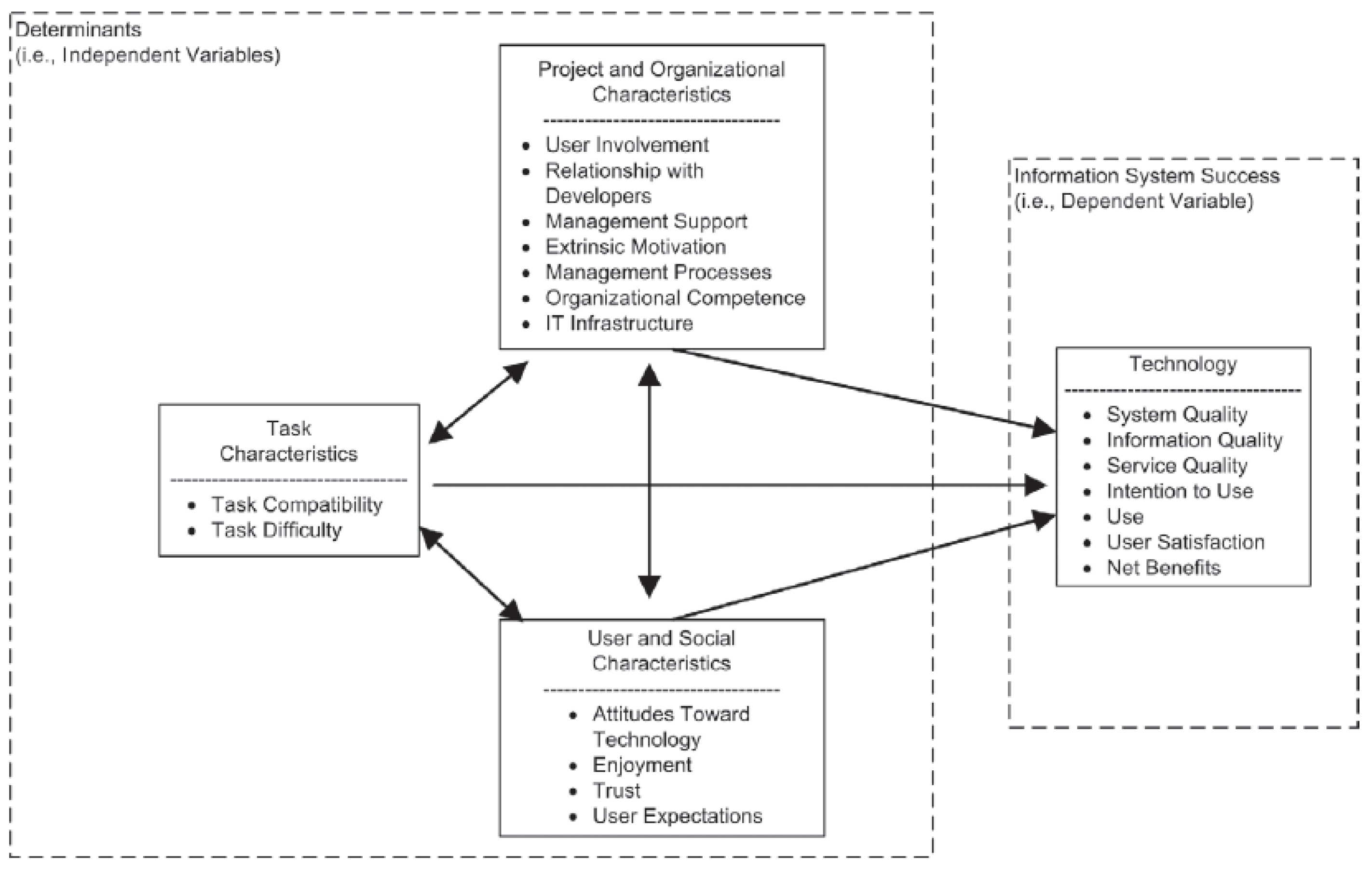

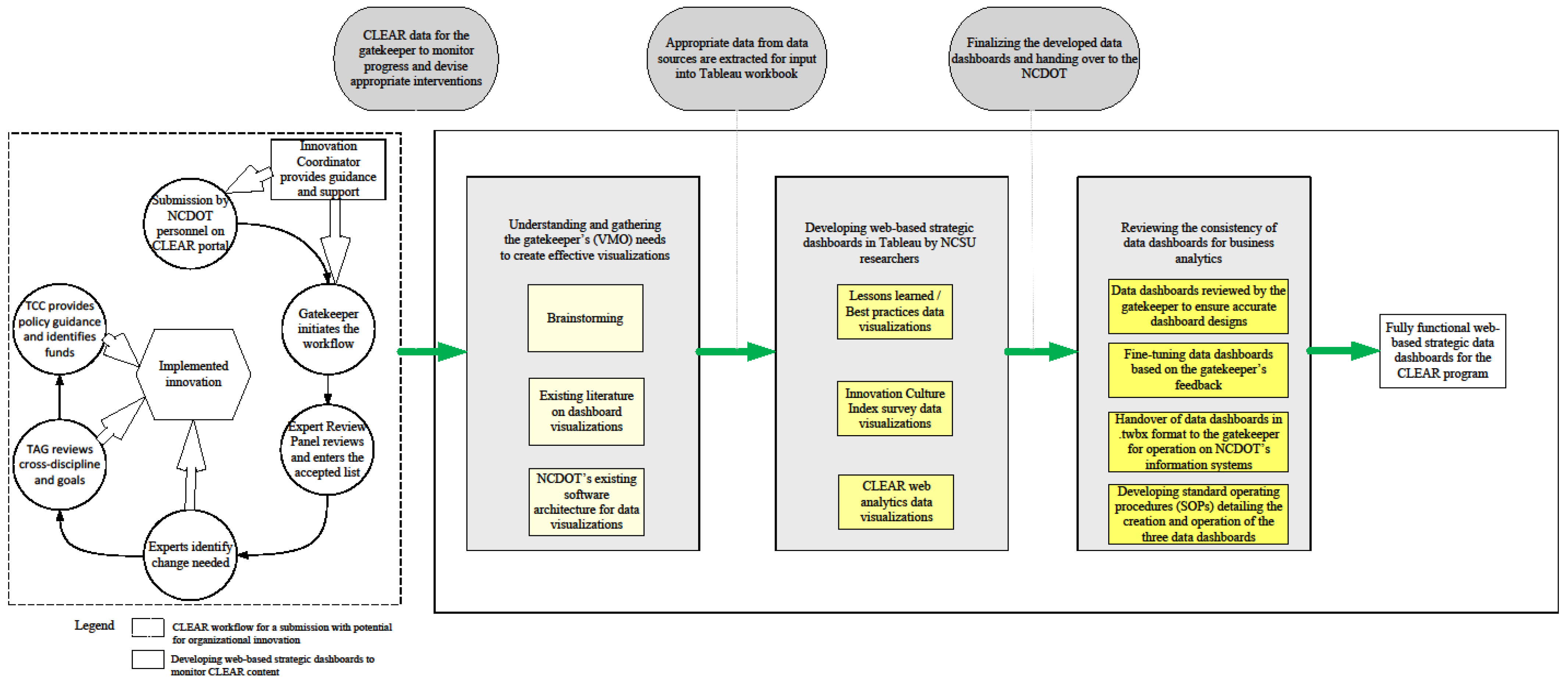
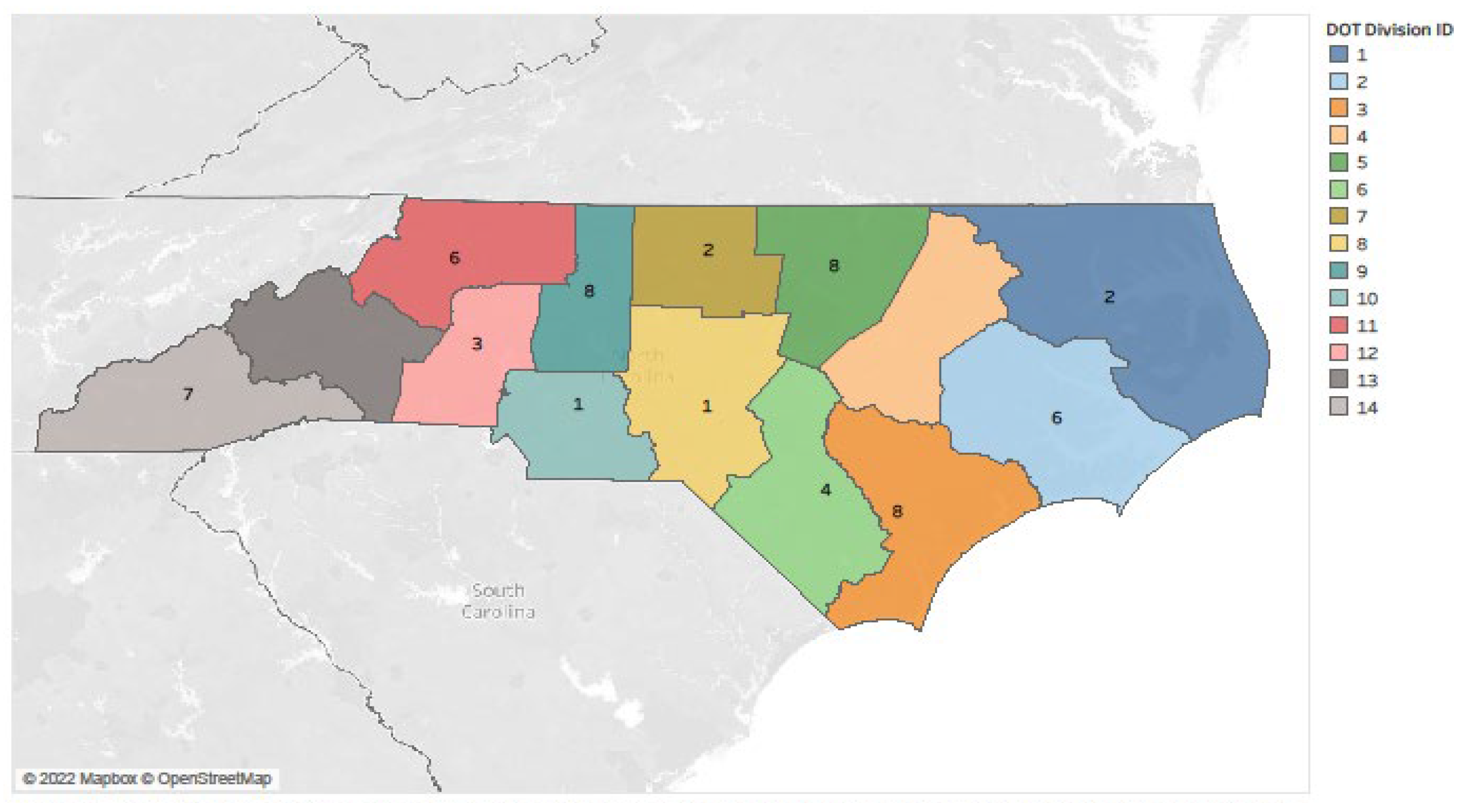
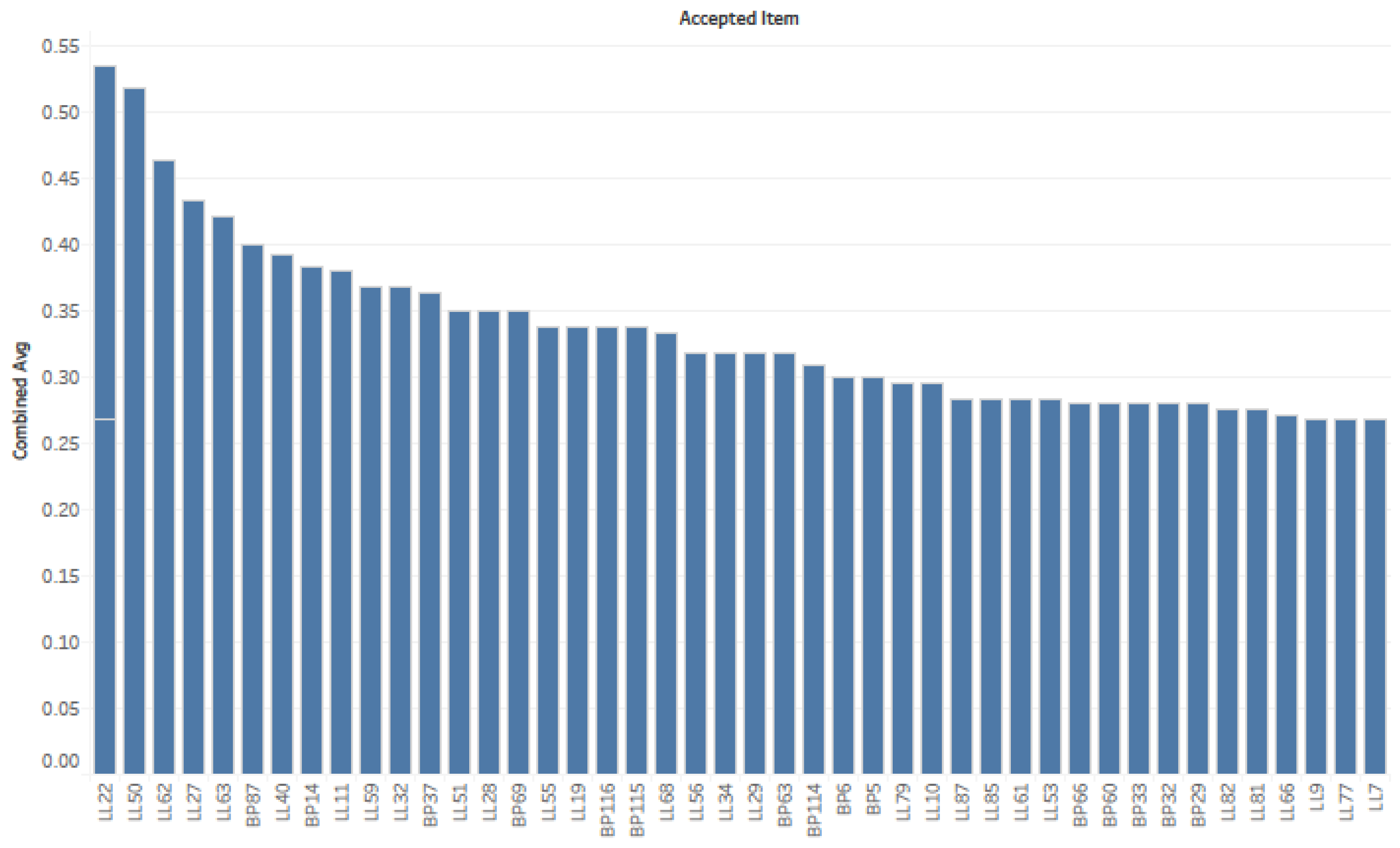


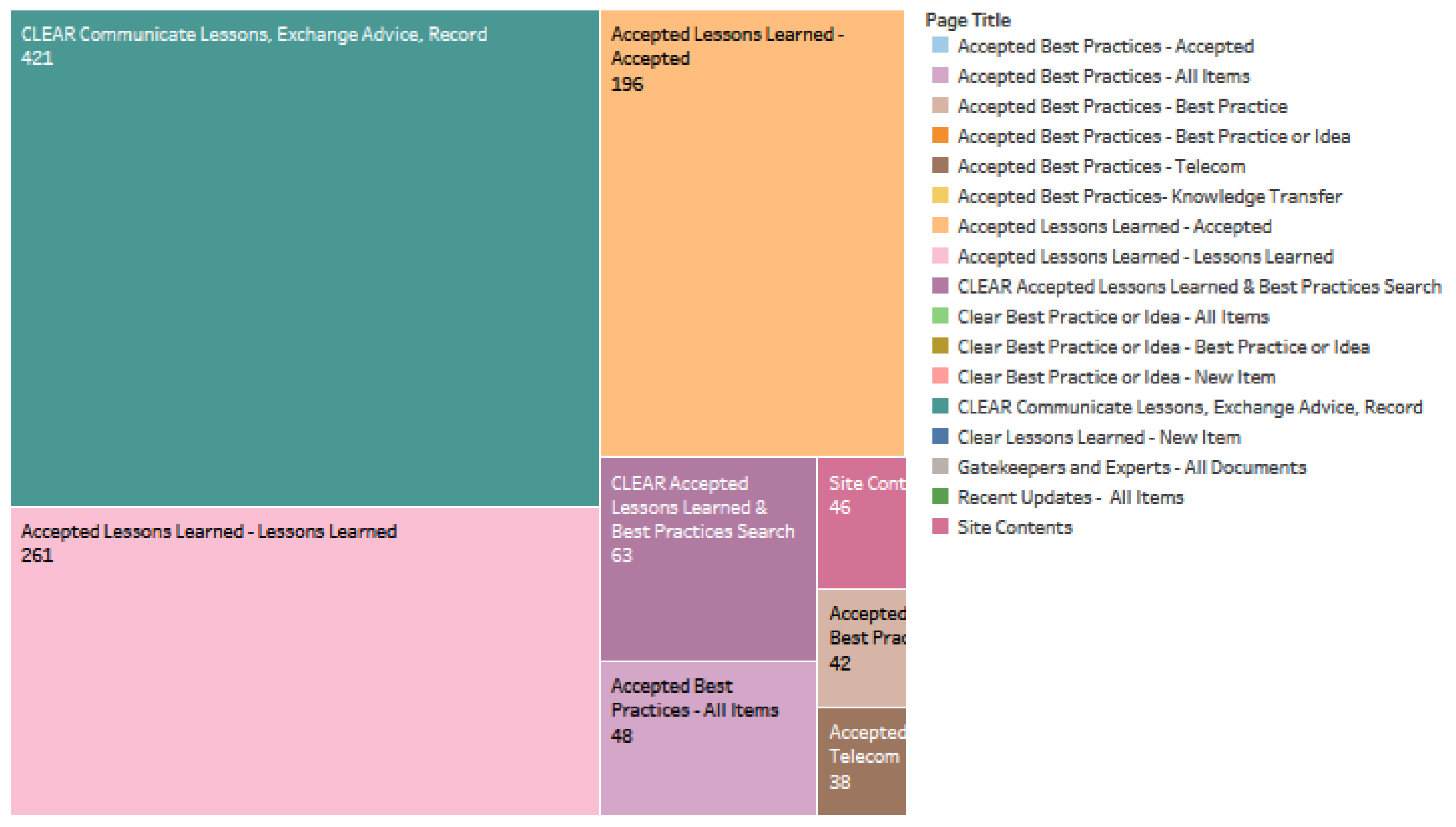
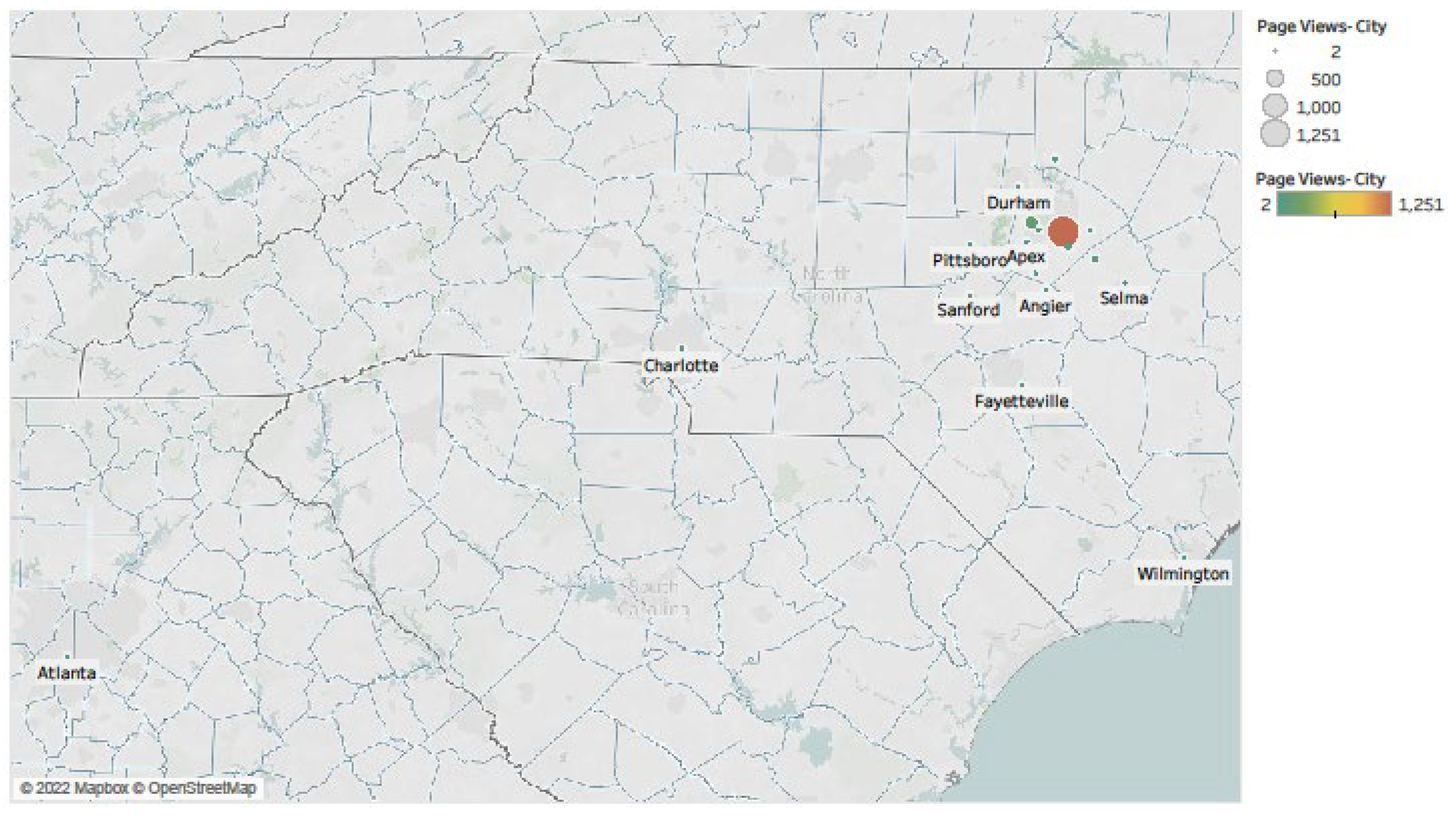

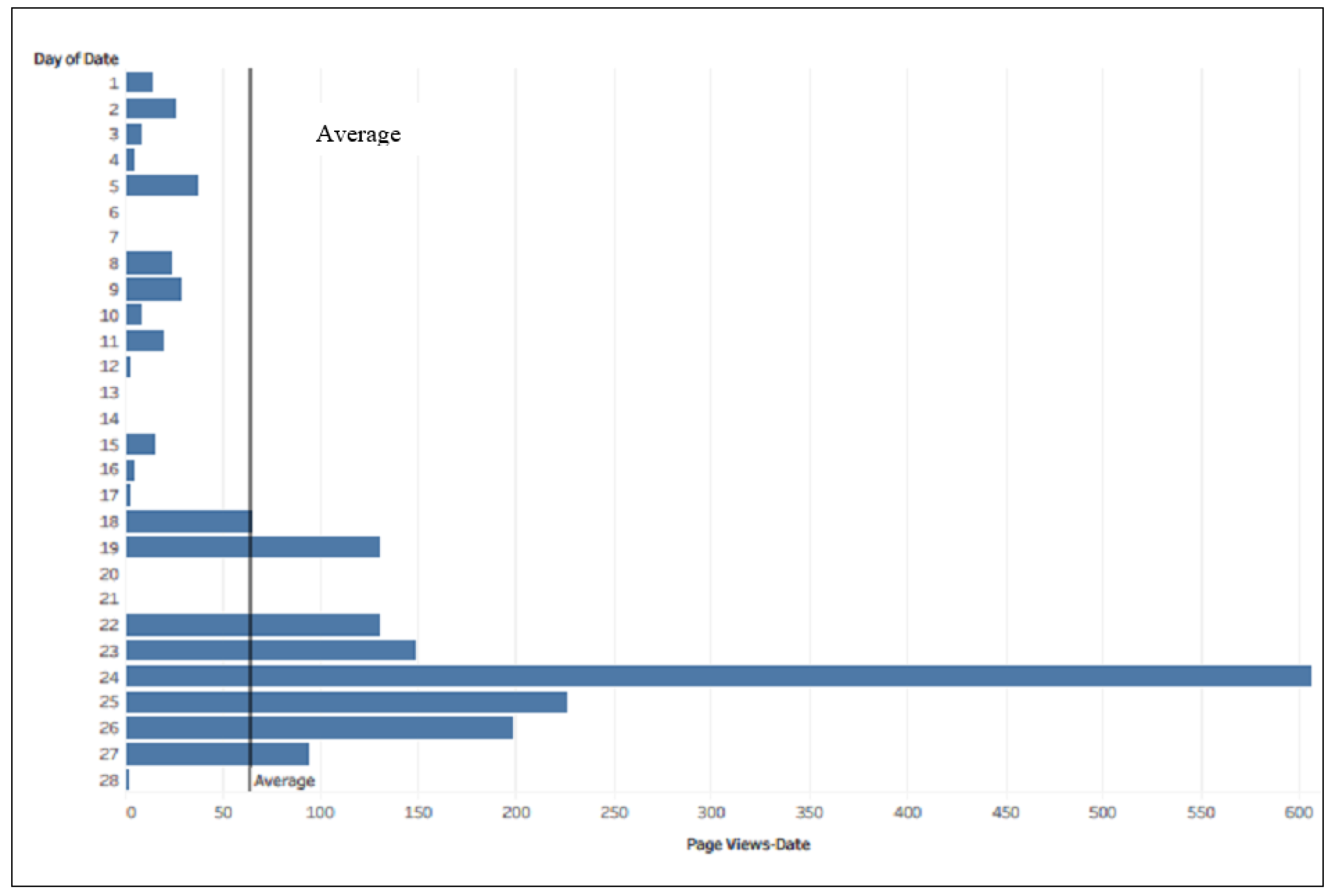
| Purpose | Organizational Role |
|---|---|
| Strategy and teams | Aligning towards an organizational vision for data analytics and the ability to achieve such vision |
| Governance | Striking the right balance between security and data access |
| Agility | Deploying a secure and stable environment that is relatively unaffected by changing business needs |
| Proficiency | Training personnel to better understand data for decision-making |
| Community | Achieving continuous improvement and enhancement from data-driven insights |
| Category | Subcategory | Total Possible | Impact Contribution of a Hypothetical CLEAR Entry |
|---|---|---|---|
| Operations and Maintenance/Business Operations | Efficiency/Production (doing more with less) | 1 | 1 |
| Accuracy/Decision | 1 | 0 | |
| Time savings | 1 | 1 | |
| Safety | Mitigated/Reduced incidences | 1 | 0 |
| Reduction in fatalities | 1 | 0 | |
| Mitigated/Differed exposure | 1 | 1 | |
| Mitigated/Reduced risk | 1 | 1 | |
| Monetary | Savings | 1 | 1 |
| Increased revenue | 1 | 0 | |
| Improved/Optimized value (more benefit for less money) | 1 | 0 | |
| Knowledge Gained | Policy change | 1 | 0 |
| Defensible/Position credibility | 1 | 0 | |
| Inform best practice | 1 | 1 | |
| Improved technical standards/methodology | 1 | 0 | |
| Better understanding of a product/problem | 1 | 0 | |
| Total | 15 | 6 |
| Quarter/Year | 2021 | 2022 | 2023 | 2024 | 2025 |
|---|---|---|---|---|---|
| Q1 | 122 | 48 | 0 | 35 | 28 |
| Q2 | 20 | 4 | 44 | 21 | 28 * |
| Q3 | 58 | 67 | 17 | 28 | |
| Q4 | 26 | 5 | 45 | 28 | |
| Yearly total | 226 | 124 | 106 | 112 | 56 |
| Total entries | 624 |
Disclaimer/Publisher’s Note: The statements, opinions and data contained in all publications are solely those of the individual author(s) and contributor(s) and not of MDPI and/or the editor(s). MDPI and/or the editor(s) disclaim responsibility for any injury to people or property resulting from any ideas, methods, instructions or products referred to in the content. |
© 2025 by the authors. Licensee MDPI, Basel, Switzerland. This article is an open access article distributed under the terms and conditions of the Creative Commons Attribution (CC BY) license (https://creativecommons.org/licenses/by/4.0/).
Share and Cite
Banerjee, S.; Fullerton, C.E.; Gaharwar, S.S.; Jaselskis, E.J. Strategic Web-Based Data Dashboards as Monitoring Tools for Promoting Organizational Innovation. Buildings 2025, 15, 2204. https://doi.org/10.3390/buildings15132204
Banerjee S, Fullerton CE, Gaharwar SS, Jaselskis EJ. Strategic Web-Based Data Dashboards as Monitoring Tools for Promoting Organizational Innovation. Buildings. 2025; 15(13):2204. https://doi.org/10.3390/buildings15132204
Chicago/Turabian StyleBanerjee, Siddharth, Clare E. Fullerton, Sankalp S. Gaharwar, and Edward J. Jaselskis. 2025. "Strategic Web-Based Data Dashboards as Monitoring Tools for Promoting Organizational Innovation" Buildings 15, no. 13: 2204. https://doi.org/10.3390/buildings15132204
APA StyleBanerjee, S., Fullerton, C. E., Gaharwar, S. S., & Jaselskis, E. J. (2025). Strategic Web-Based Data Dashboards as Monitoring Tools for Promoting Organizational Innovation. Buildings, 15(13), 2204. https://doi.org/10.3390/buildings15132204







